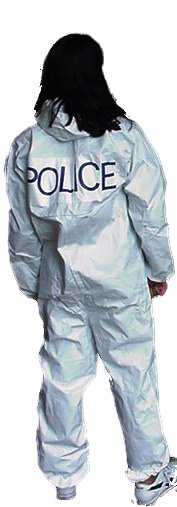Chapter 1: Contents

CONTENTS - HOW THIS INFORMATION IS ARRANGED
There are 8 parts to this material covering the Examination of a Crime Scene.
These 8 parts are:
Part 1 BEFORE ATTENDING THE SCENE
Part 2 AT THE CRIME SCENE - Assessing the Crime Scene
Part 3 AT THE CRIME SCENE - Securing the Crime Scene
Part 4 AT THE CRIME SCENE - Recording Actions
Part 5 AT THE CRIME SCENE - Searching
Part 6 AT THE CRIME SCENE - Recovering Evidence
Part 7 AT THE CRIME SCENE - Packaging and Labelling the Evidence
Part 8 AFTER ATTENDING THE CRIME SCENE
RECALL: ALL THE MATERIAL IN PARTS 1 - 8 FOCUSES ON THE EXAMINATION OF A CRIME SCENE. WHEN THAT EXAMINATION HAS BEEN COMPLETED, THE EVIDENCE THAT HAS BEEN RECOVERED FROM THE SCENE IS THEN FORENSICALLY EXAMINED. DETAILS ABOUT THE FORENSIC EXAMINATION OF EVIDENCE RECOVERED FROM THE CRIME SCENE ARE GIVEN IN THE NEXT CHAPTER.
LEARNING OUTCOMES
Learning Outcomes for each of the 8 parts to the chapter are re-stated at the top of each page.
When you have finished working through this material, you will be able to:
Part 1
State the meaning of: CSI, IBIS, CID, Force Control
State the meaning and give at least three examples of volume crime
State at least three types of professional that can attend a major crime scene
Suggest why crime scene examination requires good teamworking
Part 2
State the meaning of FOA, and at least three of the roles of the FOA
State some of the steps carried out by a CSI during their initial assessment of a crime scene
Explain the meaning of CAP and the consequences of not using a CAP
State the meaning of the Health and safety terms: COSHH, DSEAR
Part 3
Explain why a cordon is used at some crime scenes
Explain what it means when a crime scene is owned the police
Explain the meaning of crime scene, contamination, PPE
State two reasons why PPE is used by crime scene examiners
Part 4
Explain the meaning of physical evidence, modus operandi
Explain why a CSI must keep a full and accurate record of their actions at a crime scene
Describe one benefit of making a sketch of the crime scene
State two reasons why a tripod should always be used in photographing a crime scene
Part 5
Explain why a CSI might use stepping plates in examination of a crime scene
Explain the dual meanings of POE
Explain why a CSI might use numbered evidence boards in examination of a crime scene
State at least four different types of physical evidence that can be recovered at a crime scene
Part 6
Explain the meaning of ESLA and state the type of evidence that can be recovered with it
For two types of evidence, state how they might be recovered from a scene of crime
Explain the meaning of latent when the word is applied to a fingerpint at a crime scene
State Locard's Law and say why you think TWO-WAY transfer of evidence is better than ONE-WAY transfer
Part 7
State two reasons why a CSI must securely package physical evidence they recover at the crime scene
Give examples of packaging that should be used for at least three different items of physical evidence
Describe the information the CSI should give when completing evidence labels
Explain the meaning of "the chain of custody" or "continuity"
Part 8
State the 6 essential parts of the process of examining a crime scene (see parts 2 to 7)
State which two types of physical evidence are routinely examined by the police scientific support unit
State the meaning of MGFSS
Describe the information that Part A and Part B of the MGFSS forms give